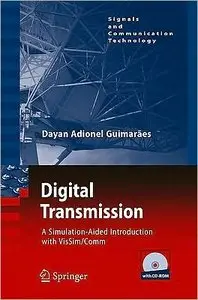Dayan Adionel Guimaraes "Digital Transmission: A Simulation-Aided Introduction with VisSim/Comm (Signals and Communication Technology)"
Springer | English | 2010-01-01 | ISBN: 3642013589 | 800 pages | PDF | 12,5 MB
Springer | English | 2010-01-01 | ISBN: 3642013589 | 800 pages | PDF | 12,5 MB
Digital Transmission – A Simulation-Aided Introduction with VisSim/Comm is a book in which basic principles of digital communication, mainly pertaining to the physical layer, are emphasized. Nevertheless, these principles can serve as the fundamentals that will help the reader to understand more advanced topics and the associated technology. In this book, each topic is addressed in two different and complementary ways: theoretically and by simulation. The theoretical approach encompasses common subjects covering principles of digital transmission, like notions of probability and stochastic processes, signals and systems, baseband and passband signaling, signal-space representation, spread spectrum, multi-carrier and ultra wideband transmission, carrier and symbol-timing recovery, information theory and error-correcting codes. The simulation approach revisits the same subjects, focusing on the capabilities of the communication system simulation software VisSim/Comm on helping the reader to fulfill the gap between the theory and its practical meaning. The presentation of the theory is made easier with the help of 357 illustrations. A total of 101 simulation files supplied in the accompanying CD support the simulation-oriented approach. A full evaluation version and a viewer-only version of VisSim/Comm are also supplied in the CD.
NO MIRRORS according to the rules





